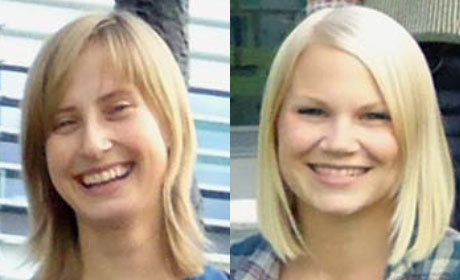Study on replication fork stability from Skarstad group published in Nucleic Acids Research

Replication forks must be stabilized in order to avoid DNA breakage and recombination. In a study recently published in Nucleic Acids Research (journal impact factor 9.2), entitled SeqA structures behind Escherichia coli replication forks affect replication elongation and restart mechanisms, researchers in the Skarstad group show that double strand breaks are generated in the absence of fork-trailing SeqA structures and that cells then have lost the ability to perform direct (RecA-independent) restart of replication forks.
The two first authors are Ida Benedikte Pedersen and Emily Helgesen (photo).
The SeqA protein is important for maintenance of genome stability during rapid growth in E. coli. It prevents re-initiation of already initiated origins by sequestering the origins for about a third of a generation. This function is important because it i) prevents the launching of too many forks and ii) secures a minimum spacing between replication forks following each other on the same chromosome. There potentially exists a third important role of SeqA which has to do with the dynamic SeqA structures that trail the replication forks. The present work separates issues that occur when too many forks are launched from issues that arise when SeqA is not present at the fork, and shows that lack of fork-trailing SeqA structures is a major cause of genome instability.
Links:
SeqA structures behind Escherichia coli replication forks affect replication elongation and restart mechanisms.
Pedersen IB, Helgesen E, Flåtten I, Fossum-Raunehaug S, Skarstad K.
Nucleic Acids Res. 2017 Apr 12. doi: 10.1093/nar/gkx263.
PMID: 28407100
Home page of Kirsten Skarstad's "DNA replication and chromosome dynamics" research group
Department of Microbiology research groups
